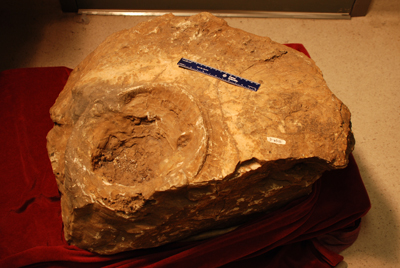 Not to be rude, but what in the world is a rudist? Well, rudists are invertebrates, and they lived in the world’s oceans during the late Jurassic and the Cretaceous, about 150-65 million years ago; they are now extinct. They are bivalves — the name means “two shells.” Today’s familiar bivalves, clams and mussels, have two shells that are more or less symmetrical. But rudists were a bit unusual: their two shells were very different from each other. One shell was either conical or coiled, and it was attached to the ocean floor (or neighboring rudists). The other shell sat on top, like a little hat. The organism lived inside. They were probably filter feeders, feeding on plankton in the water, like many other bivalves today.
Not to be rude, but what in the world is a rudist? Well, rudists are invertebrates, and they lived in the world’s oceans during the late Jurassic and the Cretaceous, about 150-65 million years ago; they are now extinct. They are bivalves — the name means “two shells.” Today’s familiar bivalves, clams and mussels, have two shells that are more or less symmetrical. But rudists were a bit unusual: their two shells were very different from each other. One shell was either conical or coiled, and it was attached to the ocean floor (or neighboring rudists). The other shell sat on top, like a little hat. The organism lived inside. They were probably filter feeders, feeding on plankton in the water, like many other bivalves today.
Rudists would grow on top of one another and form rudist reefs. They were the major reef-building organisms of their time — corals weren’t so abundant back then. Reefs are really important habitats for other marine organisms, like fish and crustaceans. So rudists played an important role in the ancient ocean.
So if rudists were so ecologically important, how did they get stuck with such an odd name? Lamarck dubbed them rudists in 1819, but it’s a little unclear what he meant. The Latin word rudis means rude, raw, or uncultivated. The Latin word rudus means rubble, or broken stone — specifically, the stones that made up Roman roads. Rudists do seem sort of coarse and unrefined, and they do look an awful lot like stones. But who knows what Lamarck was thinking.
This fossil rudist was found in Chiapas, Mexico. Learn more about rudists on the UCMP’s rudist page.